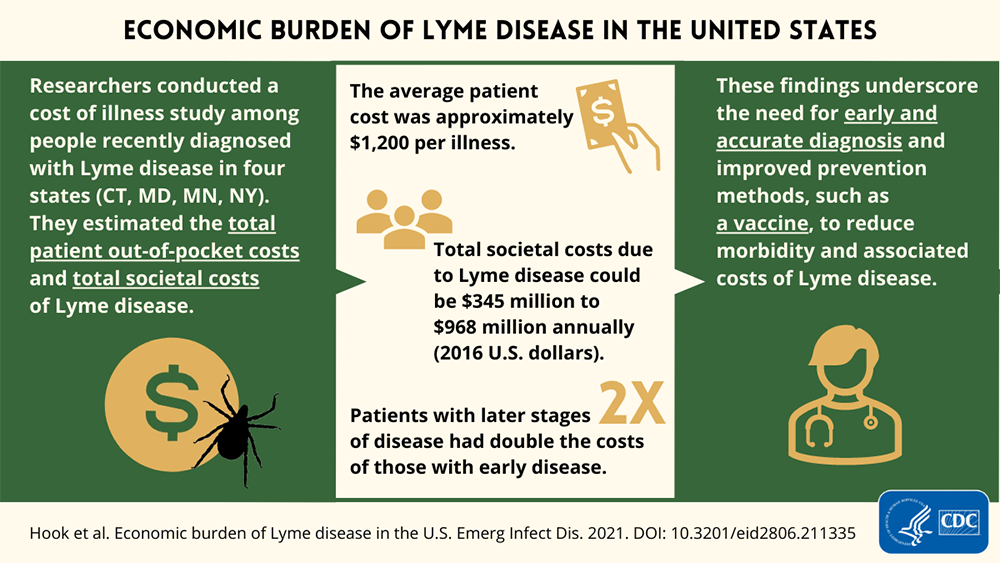Uncover the shocking truth behind the rise of Lyme disease and why this debilitating illness continues to impact millions.
Table of Contents
- Introduction to Lyme Disease
- Understanding Lyme Disease Symptoms
- The Growth of Lyme Disease Cases
- Preventing Lyme Disease
- Diagnosing Lyme Disease Early
- Living With Chronic Lyme Disease
- The Role of Climate Change
- The Importance of Public Awareness
- The Future: Lyme Disease Research and Progress
- Summary
- FAQs
Introduction to Lyme Disease
Have you ever heard about Lyme Disease? It’s important to learn about this illness to keep yourself and your loved ones safe. Lyme Disease is a type of sickness that is caused by tiny insects called ticks. These little bugs can make people very sick, so it’s essential to know how to prevent getting Lyme Disease.
What is Lyme Disease?
Lyme Disease is a sickness that people can get when they are bitten by ticks. Ticks are like super tiny bugs that hide in grass and bushes. When they bite someone, they can make them feel really unwell. So, it’s vital to know how to avoid being bitten by ticks, especially when you’re playing outside.
Ticks and How They Spread Illness
Ticks are sneaky bugs that can spread Lyme Disease to people by biting them. Imagine they’re like little vampires that drink blood! These bugs like to hide in tall grass and plants, waiting for someone to pass by so they can have a bite. That’s why it’s crucial to be careful and learn how to keep yourself safe from these tricky creatures.
Understanding Lyme Disease Symptoms
When it comes to Lyme disease, knowing the symptoms is crucial. These signs can help us identify if someone might have been infected by a tick. Let’s dive into some common symptoms to keep in mind.
Common Symptoms of Lyme Disease
One common sign of Lyme disease is feeling extremely tired, like you ran a marathon even though you only walked a little. Another clue can be a strange rash that appears like a target, with red rings spreading outwards. Sometimes, kids can have joint pain, making it hard to move around easily. If you notice any of these symptoms, it’s essential to tell an adult right away so they can help you see a doctor.
The Growth of Lyme Disease Cases
Lyme disease is becoming more common nowadays. This illness is caused by tiny insects called ticks. These tiny bugs can make people like you or me sick.

Image courtesy of via Google Images
Reasons Behind the Increase
There are a few reasons why more people are getting Lyme disease. Changes in the environment play a big part. As the world gets warmer, ticks can survive in more places. That means they can easily make more people sick with Lyme disease.
Preventing Lyme Disease
When it comes to Lyme disease, prevention is key to staying safe from this tick-borne illness. By taking a few simple steps, you can reduce the risk of getting Lyme disease and enjoy your outdoor adventures without worry.
Staying Safe from Ticks
If you love playing outside, there are easy ways to protect yourself from ticks. When you’re in wooded areas or tall grass, wear long pants and shirts with sleeves to cover your skin. Ticks like to attach themselves to you, so always check your body and clothes for ticks after playing outside. Once you come inside, take a shower to wash away any ticks that might be hiding on your skin.
Remember, ticks can be tiny and hard to spot, so be thorough when checking for them. By staying vigilant and following these precautions, you can greatly reduce your chances of getting Lyme disease.
Diagnosing Lyme Disease Early
When someone feels sick, it’s important for doctors to figure out what’s wrong so they can help them feel better. Here, we’ll talk about how doctors find out if someone has Lyme Disease, a sickness caused by tiny bugs called ticks. Early detection of Lyme Disease can make a big difference in how quickly someone can get better.

Image courtesy of via Google Images
How Doctors Test for Lyme Disease
When someone shows signs of Lyme Disease, like a red rash or feeling very tired, the doctor might ask for a special blood test. This test looks for tiny clues inside the blood that show if the Lyme germs are present. Sometimes, doctors might also ask about any outdoor activities, like playing in the grass or hiking in the woods, where ticks live. By learning about a person’s symptoms and the places they’ve been, doctors can put the puzzle pieces together to see if Lyme Disease is the likely culprit.
Living With Chronic Lyme Disease
Chronic Lyme Disease is when someone continues to feel sick even after they have been treated for regular Lyme Disease. Imagine feeling tired all the time, hurting in different parts of your body, and feeling like you can’t do as much as you used to. That’s what it’s like for someone living with chronic Lyme Disease.
| Factors contributing to the rise of Lyme Disease | Explanation |
|---|---|
| Increased tick population | Warmer temperatures and changes in habitat have led to a rise in the population of ticks carrying the Lyme disease-causing bacteria. |
| Expansion of endemic areas | As ticks spread to new regions, more people are at risk of contracting Lyme disease. |
| Human encroachment on natural habitats | Deforestation and urbanization have brought humans closer to tick habitats, increasing their exposure to the disease. |
| Challenges in diagnosis and treatment | Lyme disease can be difficult to diagnose and treat, leading to delays in proper healthcare and allowing the disease to spread. |
| Gaps in public awareness and prevention | Many people are not aware of the risks associated with Lyme disease and how to prevent it, leading to a higher incidence of infections. |
—
In many cases, when we get sick, with a cold, for example, our bodies fight off the germs and we start feeling better after a few days. But for some people with chronic Lyme Disease, the symptoms keep coming back, making it hard to do things they enjoy.
With regular Lyme Disease, in the early stages, you might have a fever, headache, and fatigue, but those symptoms usually improve with treatment. However, for those with chronic Lyme Disease, these symptoms persist and can even get worse over time.
People with this condition may experience ongoing pain in their joints, muscles, or head. They might also feel extreme tiredness, almost as if they didn’t get enough sleep. Living with chronic Lyme Disease can be challenging, but with support and proper care, people can learn to manage their symptoms and lead fulfilling lives.
—
Remember, if you suspect you may have Lyme Disease or ongoing symptoms after being treated for Lyme Disease, it’s important to speak to a healthcare provider who can help diagnose and manage your condition effectively.
The Role of Climate Change
Climate change is a very important topic that affects not just the weather, but also our health. When it comes to Lyme disease and other tick-borne illnesses, climate change plays a crucial role in their spread and the increase in cases. Let’s explore how warmer weather impacts the spread of these diseases.

Image courtesy of via Google Images
Warmer Weather and Ticks
Warmer temperatures caused by climate change provide a friendlier environment for ticks to thrive and survive. Ticks, which are small parasitic insects that feed on animal and human blood, are responsible for spreading diseases like Lyme disease. As temperatures rise, ticks can survive in more places for longer periods, increasing the chances of coming into contact with humans and spreading illnesses.
Climate change also affects the habitats where ticks live. Previously, ticks were mostly found in specific regions, but with warmer weather, they are able to establish themselves in new areas. This shift in habitat patterns leads to more people being at risk of encountering these disease-carrying pests.
Overall, the role of climate change in the rise of Lyme disease and other tick-borne illnesses cannot be ignored. By understanding how climate factors impact the behavior of ticks, we can take proactive steps to prevent these diseases and protect our health.
The Importance of Public Awareness
Public awareness about Lyme disease is crucial for keeping everyone safe and healthy. When people know about the symptoms and how to prevent getting sick, it helps to stop the spread of this illness.
Why Knowing About Lyme Disease Helps
Understanding the symptoms of Lyme disease is important because it allows us to recognize when someone might be sick and needs help. For example, if you know that feeling very tired and having a rash are signs of Lyme disease, you can tell a grown-up about it so they can go to the doctor.
Additionally, being aware of how to prevent Lyme disease is essential in keeping everyone protected. Simple steps like wearing long pants and using bug spray when playing outside can greatly reduce the risk of getting bitten by ticks that carry the disease.
By spreading awareness about Lyme disease and how to stay safe, we can all work together to make sure fewer people get sick and more people stay healthy.
The Future: Lyme Disease Research and Progress
As we learn more about Lyme disease, scientists are working hard to find new and better ways to protect us from this illness. Research is a critical part of fighting Lyme disease and making sure people stay safe. Let’s explore some exciting developments in Lyme disease research and progress.

Image courtesy of via Google Images
New Ways to Beat Lyme Disease
One way scientists are looking to beat Lyme disease is by creating better tests to diagnose it early. When doctors can identify Lyme disease quickly, they can start treatment right away, which helps people get better faster. Additionally, researchers are studying different ways to prevent ticks from spreading the bacteria that causes Lyme disease. By understanding how to stop ticks, we can keep ourselves and our families safe from getting sick.
Another exciting area of research is finding new treatments for people who have chronic Lyme disease. Chronic Lyme disease can be challenging because the symptoms can last a long time, even with treatment. Scientists are exploring different medications and therapies to help manage these ongoing symptoms and improve the quality of life for those with chronic Lyme disease.
Furthermore, researchers are investigating vaccines to prevent Lyme disease. Just like how a flu shot can protect you from getting the flu, a Lyme disease vaccine could stop you from getting sick from a tick bite that carries the bacteria. This exciting progress could make a significant impact on reducing the number of Lyme disease cases in the future.
Overall, the dedication of scientists and researchers to finding new ways to combat Lyme disease is heartening. With continued progress and advancements in research, we can look forward to a future where Lyme disease is less of a threat to our health and well-being.
Summary
As we explored the topic of Lyme Disease and why it is on the rise, we learned some crucial facts that can help us understand this illness better and potentially prevent it. Lyme Disease is caused by small insects called ticks that can spread the illness to people they bite. Some common symptoms of Lyme Disease include feeling very tired and developing a rash. The increase in Lyme Disease cases can be attributed to factors like changes in the environment, which provide a better habitat for ticks to thrive.
To prevent Lyme Disease, it’s important to take precautions such as wearing long pants when playing outside and staying clear of areas where ticks are commonly found. Early diagnosis of Lyme Disease is crucial in ensuring effective treatment. Doctors test for Lyme Disease by examining blood samples to detect the presence of the bacteria that causes the illness.
Living with chronic Lyme Disease can be challenging, as the symptoms persist over a long period. Climate change plays a role in the rise of Lyme Disease, as warmer weather allows ticks to survive and spread the disease more easily. Public awareness about Lyme Disease symptoms and prevention methods is essential to protect ourselves and our communities.
Looking ahead, researchers are working on new ways to combat and prevent Lyme Disease, offering hope for better treatments in the future. By understanding the causes and effects of Lyme Disease and taking proactive measures to prevent it, we can contribute to a healthier and safer environment for everyone.
FAQs
Can you get Lyme Disease more than once?
Yes, unfortunately, it is possible to get Lyme Disease more than once. If a person gets bitten by an infected tick again, they could become sick with Lyme Disease a second time. That’s why it’s super important to always remember to avoid tick bites whenever you’re playing outside or exploring nature.
Are all ticks dangerous?
Not all ticks are dangerous, but some types can carry Lyme Disease. The tick that spreads this illness is called the black-legged tick or deer tick. So it’s crucial to be careful with these ticks, especially if you find one on you. Remember, not all ticks are bad, but it’s best to stay away from any ticks to stay safe and healthy!




